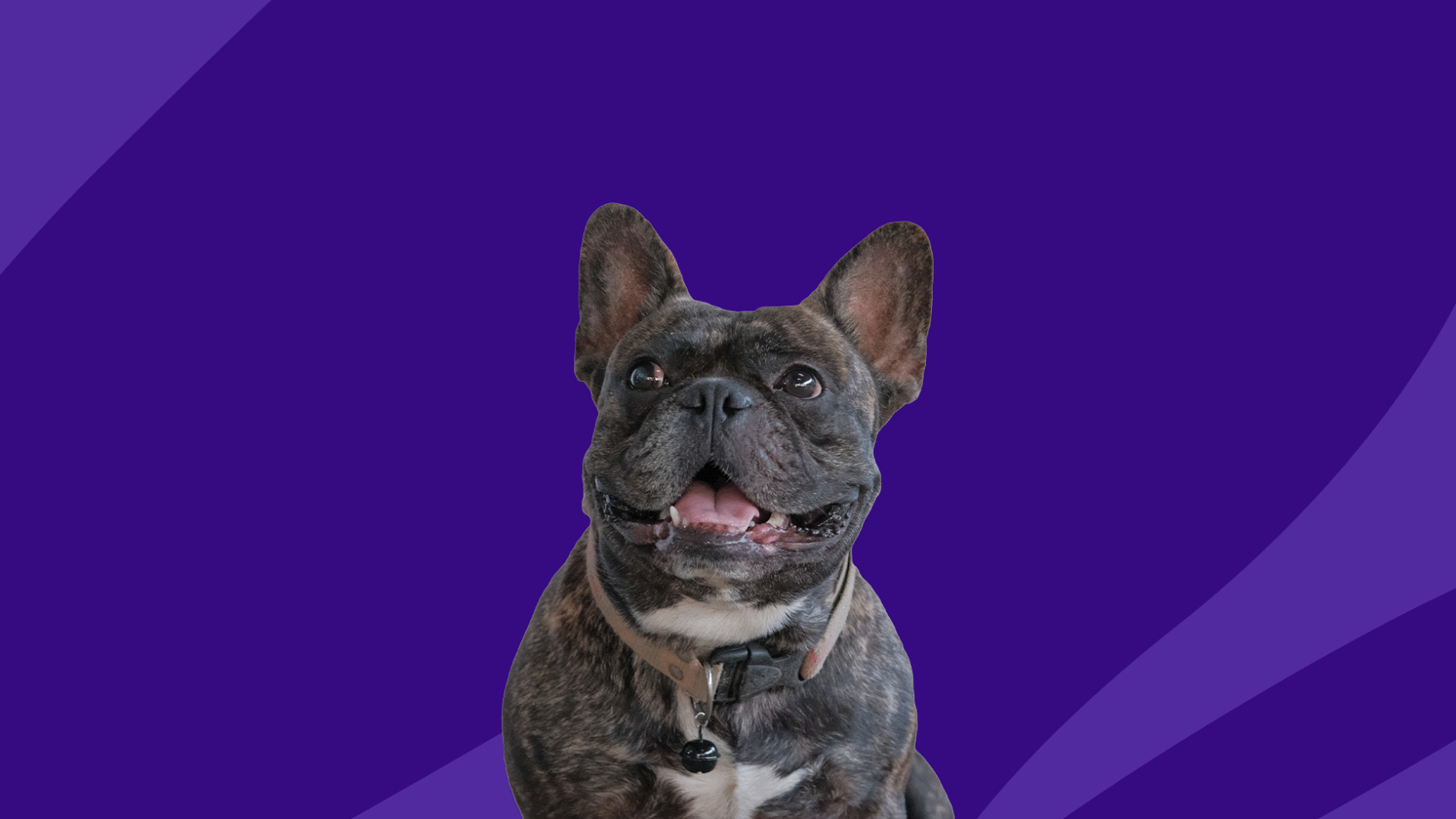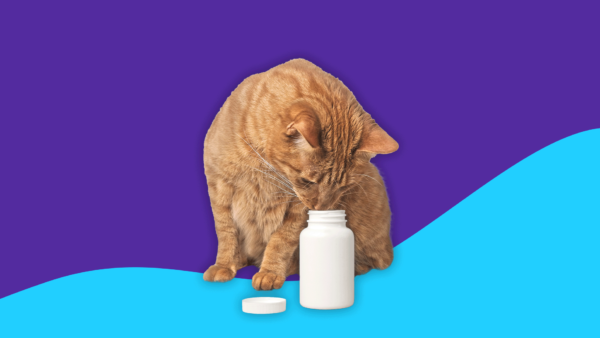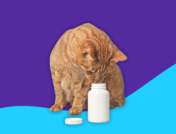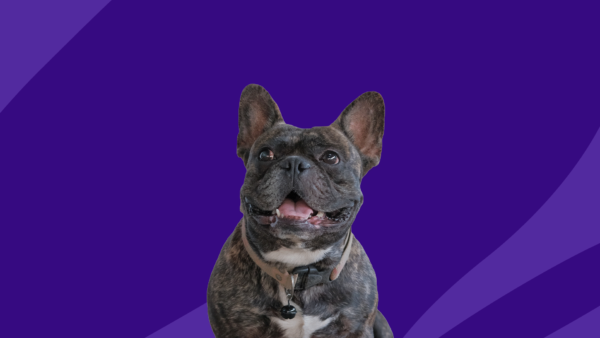Key takeaways
Prednisone is a corticosteroid for humans and animals that treats inflammatory and immunosuppressive conditions in dogs, such as allergies, lymphoma, and lupus.
Potential side effects of prednisone can include increased thirst and urination, increased hunger, panting, vomiting, diarrhea, and lethargy.
The typical dosage range of prednisone for dogs is 0.5 to 4 mg/kg, depending on the condition the dog is being treated for and other factors.
It is important that pet owners give their dogs the correct dosage of prednisone, as overdose is possible.
Your veterinarian can assist you if you need to taper or decrease your dog’s prednisone dosage.
Prednisone dosage | Calculating proper dosage | Prednisone dosage chart | Prednisone overdose | Guidelines for administration
Prednisone (Deltasone) is a human and pet medicine belonging to a class of drugs known as corticosteroids. Corticosteroids, also known as steroids, act as hormones to reduce inflammation in the body.
“Prednisone is used for many different conditions in dogs including allergies, lymphoma, immune-mediated hemolytic anemia, intervertebral disk disease, lupus, Addison’s disease, and inflammatory bowel disease,” says Ray Spragley, DVM, CVA, CCRT, the founder of Zen Dog Veterinary Care in New York.
There are many dosage guidelines for prednisone, but according to Dr. Spragley, the recommended dose can range from 0.5 to 4 milligrams per kilogram (mg/kg), depending on the dog’s weight.
Prednisone dosage for dogs
Regarding prednisone dosage for dogs, Dr. Spragley explains that it can vary depending on the condition being treated. Some dogs may receive higher doses of prednisone, while others can get lower doses depending on their health.
“If prednisone is being used as an anti-inflammatory, it is given at doses of 0.5 mg-1 mg/kg per day,” Dr. Spragley says. “If prednisone is being used as an immunosuppressant, it is given at doses of 2-4 mg/kg per day.”
According to Dwight Alleyne, DVM, a veterinarian advisor for Betterpet.com in Marietta, Georgia, several factors affect a dog’s dosage of prednisone, including:
- Age
- Pre-existing health conditions
- Overall health status
- Current medications
Like most medications, prednisone comes with a few side effects that pet parents should be aware of.
According to the American Kennel Club, the most common side effects of prednisone for dogs may include:
- Increased thirst and urination
- Increased hunger
- Panting
- Vomiting
- Diarrhea
- Lethargy (tiredness)
Dogs taking prednisone for a chronic condition will likely be on the prescription drug long-term to manage symptoms. However, according to the American Kennel Club, long-term use of prednisone can increase a dog’s risk of kidney disease, Cushing’s disease, or diabetes.
If a dog is experiencing many side effects, Dr. Spragley explains that a veterinarian may prescribe the medication at a lower dose.
If your dog is taking non-steroidal anti-inflammatory drugs (NSAIDs), please let your veterinarian know before prednisone use. Drug interactions like these may increase the risk of stomach ulcers.
How much prednisone can I give my dog?
Your veterinarian will determine your canine’s specific prednisone dosage based on weight, medical conditions, and other health-related factors.
Pet owners typically won’t have to calculate their dog’s dosage, as a veterinarian will do this.
However, resources such as dosage calculators are available to help you better understand your dog’s prednisone dosage.
Below is a chart of the varying prednisone dosages for dogs by body weight. Please note that this does not include health conditions that could alter your dog’s dosage of this veterinary drug.
Prednisone for dogs dosage chart |
|
|---|---|
| Weight (lbs) | Dosage (mg) by mouth/oral tablet |
| 5-20 | 1.25-5 mg |
| 20-40 | 5-10 mg |
| 40-80 | 10-20 mg |
| 80-160 | 20-40 mg |
Source: Medi-Vet.com
Overdose of prednisone in dogs
Unfortunately, dogs can overdose on prednisone if they’re given more than the required dosage.
According to Spragley, the signs of prednisone overdose can include the following:
- Vomiting
- Diarrhea
- Lack of appetite
- Black, tarry stools
“If any of these signs are present, you should contact your primary veterinarian or call animal poison control,” Dr. Spragley adds.
You can also contact ASPCA’s Animal Poison Control at 888-426-4435 during emergency situations.
If you’re unsure of the exact dosage for your dog, please contact your veterinarian before giving them prednisone to avoid an overdose.
Guidelines for administering prednisone in dogs
Your dog’s veterinarian can advise when to give your canine prednisone. Please note that the dosage schedule may vary depending on your dog’s medical condition.
Here are some tips for giving oral prednisone to your dog:
- Call your dog in a cheery voice and bring them into a corner of a room with his back facing the corner to prevent them from backing away from you.
- Use one hand to grasp your dog’s muzzle from above, positioning your hands so that your fingertips are at the corner of their mouth on one side and your thumb at the corner of your mouth on the other side.
- While gently tipping your dog’s head back with their chin pointing upward, squeeze behind the dog’s upper teeth with your fingers. With your other hand, gently push the dog’s lower teeth to further open the jaw.
- Quickly place the prednisone tablet as far back in the mouth as possible. Avoid putting your hand too far into their mouth, as this could lead to gagging or choking.
- Lower your dog’s head and wrap your fingers around their muzzle to keep their mouth closed. You can also rub or blow on your dog’s nose to stimulate swallowing if needed.
According to Dr. Alleyne, you’ll want to avoid skipping or doubling up on doses.
“If a dose is missed, it is recommended that the next dose is given at its scheduled time,” Dr. Alleyne explains.
Sometimes, you may need to taper or decrease your dog’s prednisone dosage.
“[Tapering] could involve either decreasing how frequently the prednisone is given, the actual milligrams of the prednisone given, or a combination of both,” Dr. Alleyne says. “This is usually done over a two- to three-week period or longer depending on the medical condition being treated.”
If you taper off too quickly, your dog may experience the following symptoms:
- Severe fatigue
- Weakness
- Loss of appetite
- Vomiting
- Diarrhea
- Trembling
- Dehydration
In addition, if you don’t taper properly for a chronic condition, it could cause recurring symptoms to flare up.
Your vet will typically give you instructions on how to taper prednisone dosage for dogs.
It can take several days to be fully eliminated from your dog’s system.
Sources
- Prednisone, MedlinePlus (2020)
- Steroids, Versus Arthritis (n.d.)
- Prednisone for dogs, American Kennel Club (2023)
- Prednisone (Deltasone), American College of Rheumatology (2024)
- Prednisone 20 mg, 100 tablets, Medi-vet.com (n.d.)
- Giving your dog oral medications, Cornell University College of Veterinary Medicine
- Prednisone withdrawal: Why taper down slowly, Mayo Clinic (2022)
- How long does prednisone stay in your system after taking it for seven days, Datos.org (2023)











